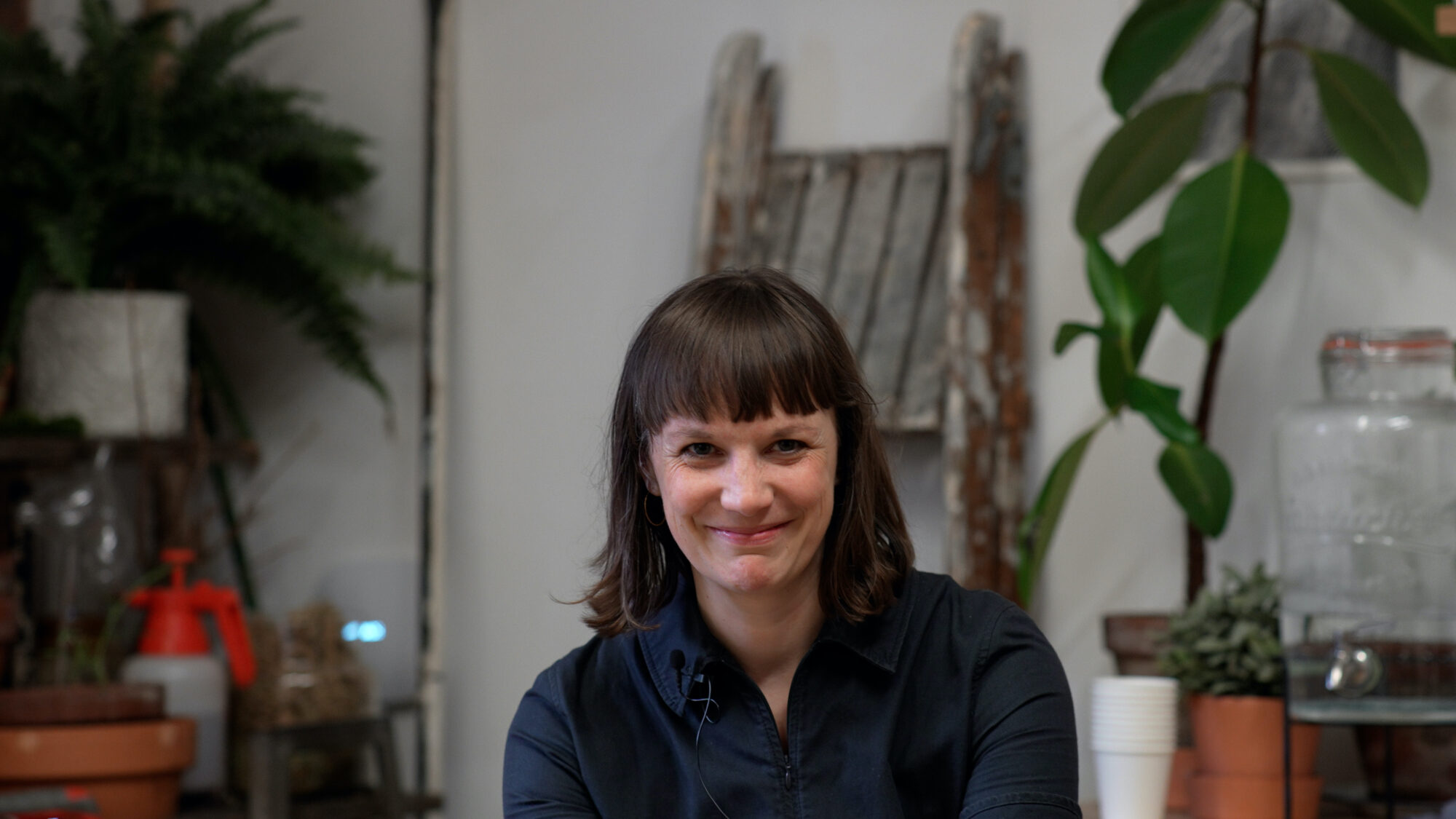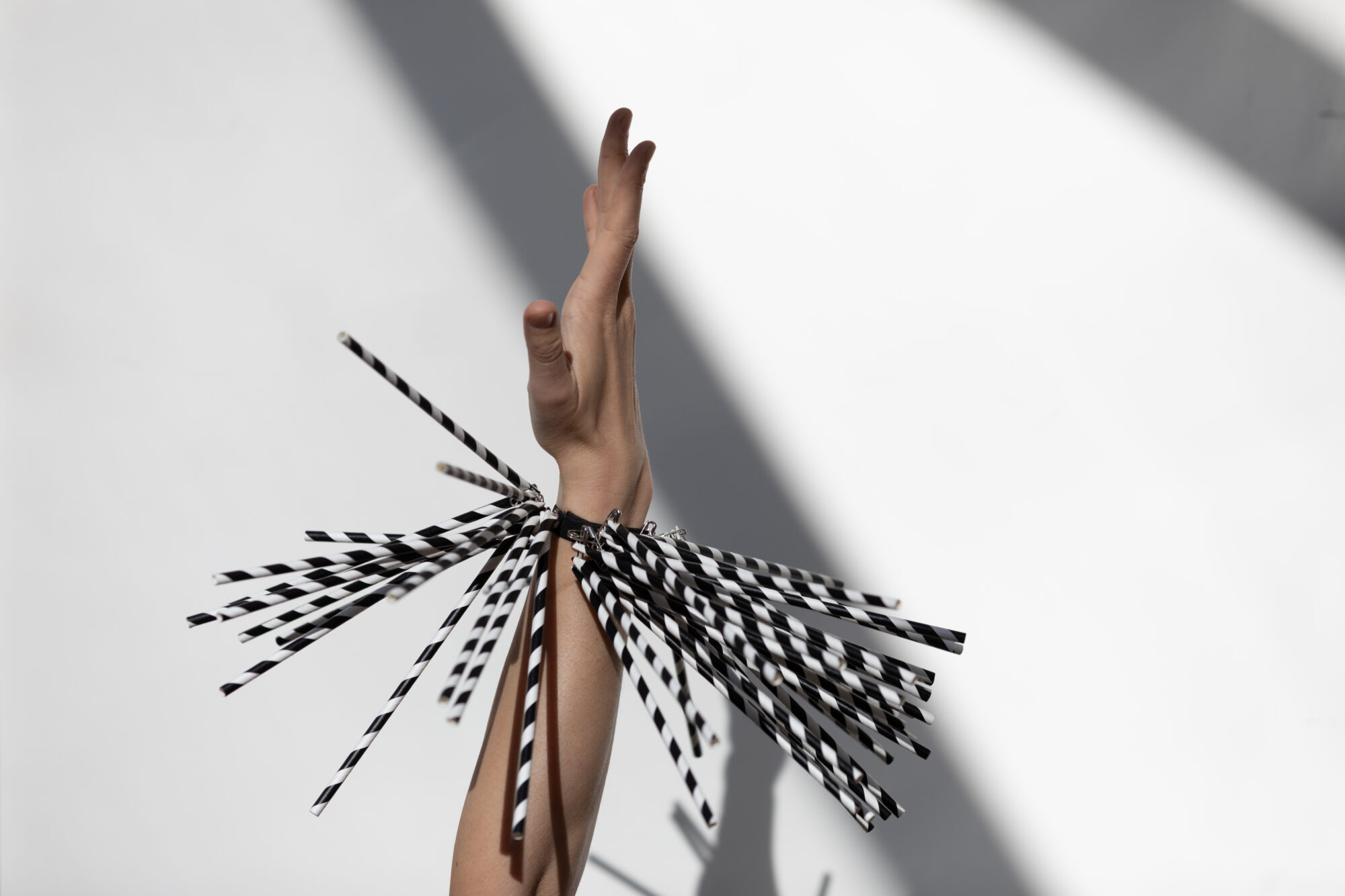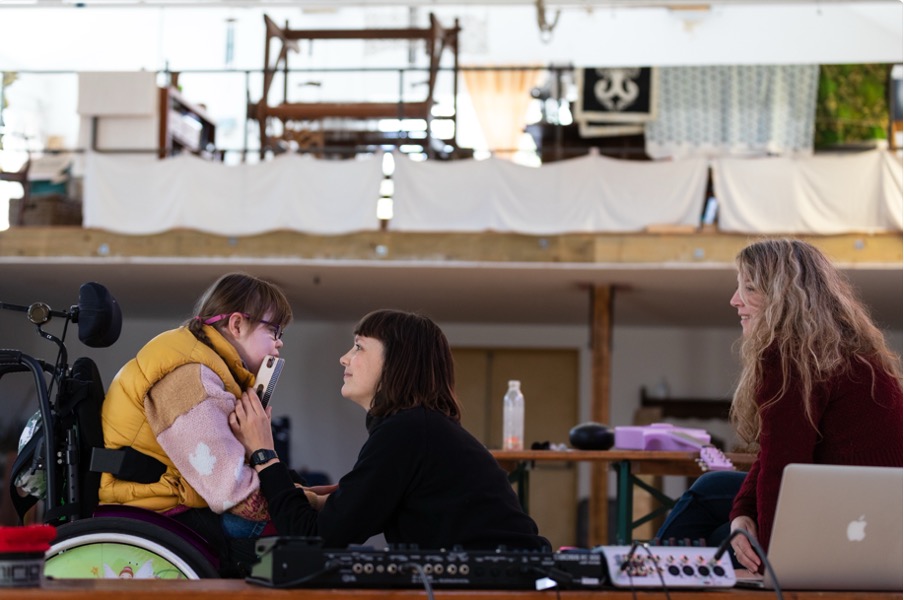Introducing Rhiannon Armstrong, Director of When the World Turns
Our current touring production of When the World Turns is directed by award-winning interdisciplinary artist, Rhiannon Armstrong. We’ve been lucky to collaborate with Rhiannon on different projects and in different ways over the past few years, from dramaturg on Jamboree to joining Oily Cart as our first Associate Artist in 2019.

Rhiannon first worked on When the World Turns to create an audio piece for a work in progress sharing as part of Bibu Festival, Sweden. As a live artist working in relational practice, we were excited by the wealth of new skills and ways of thinking they would bring to Oily Cart and When the World Turns as Director.

We wanted to share the blog Rhiannon wrote in 2019 at the end of their time as Associate Artist: at the bottom of the page there is also a video introducing their current project, The White Noise Factory:
How did I get here?
I hear a lot of talk about ‘challenging work’: this is usually presumed to mean work that challenges its audience, rather than the audience’s capacity to challenge the assumptions and processes of those that are doing the making.
There is an inclusivity at work at Oily Cart that I wanted to immerse myself in. Like many aspects of my life, my evolving work in sensory performance now lets me sit astride two worlds. Depending on the context:
- I am both enabled and disabled
- I am both a migrant and a national
- I am both a young people’s sensory maker and an experimental performance/live artist
Being in both worlds stops me getting too comfortable in my perspectives and helps me question mine and others’ assumptions. I also get to bring philosophies and practices from each context and let them influence one another. I intend to keep melding, percolating, pollinating worlds.
What did I do as an associate?
I began by working as dramaturg on Ellie’s first two productions as Artistic Director: Jamboree, and All Wrapped Up. I brought experience and skills in ensemble performance-making to the company while also expanding my understanding of Sensory Theatre, and the barriers faced by audiences and collaborators alike.

An associateship can give both company and individuals space to develop successful long-term working relationships. I was collaborating artist on Something Love, and commissioned to create a sound work for When The World Turns, with Oily Cart and Polyglot Theatre (Australia).
My final act as associate was to travel to BIBU for my first taste of the international Sensory Theatre scene. As an independent artist it is rare to be able to attend these symposia and festivals.
Making my own sensory work
Oily Cart also encouraged me to seek funding to begin creating my own sensory work, providing mentoring, in kind studio and production support, and introductions to families and schools. The Covid-19 pandemic derailed a lot of my plans but thanks to support from Oily Cart and my funders (Unlimited, Jerwood Arts, and Paul Hamlyn) I was able to undertake collaborative explorations into sound as a form of touch and intimacy without social interaction, with staff and students at Swiss Cottage School; Sam and Lucy Bowen; and Tim Spooner.

The resulting project is now called The White Noise Factory. Its process is particularly attentive to young people’s inherent musicality, and considers possibilities for collaboration across time and distance, without relying on linguistic communication. The work explores what happens when we privilege sensory meaning-making over intellectual meaning-making.
What do I want to say about my time as Associate Artist
The main thing I want to emphasise is how much of a ripple effect my time as Associate has had. I have just finished a spell as artist in residence at Ashmount School in Loughborough with Attenborough Arts Centre. I would never have undertaken this residency before or have even known about it. Tim Spooner and I made a whole new sensory listening device which has already travelled with me to specialist schools and into family homes as part of remote and in person sensory sound collaborations. This was Tim’s first experience of making work for those who face the most barriers to access: our conversations about intended audience and the complex and intense nature of barriers to access have recurred in my work with other companies who don’t have experience in the sensory sector.
Watch a short video about The White Noise Factory (currently seeking development support):
Follow Rhiannon Armstrong @armstrongtactic
